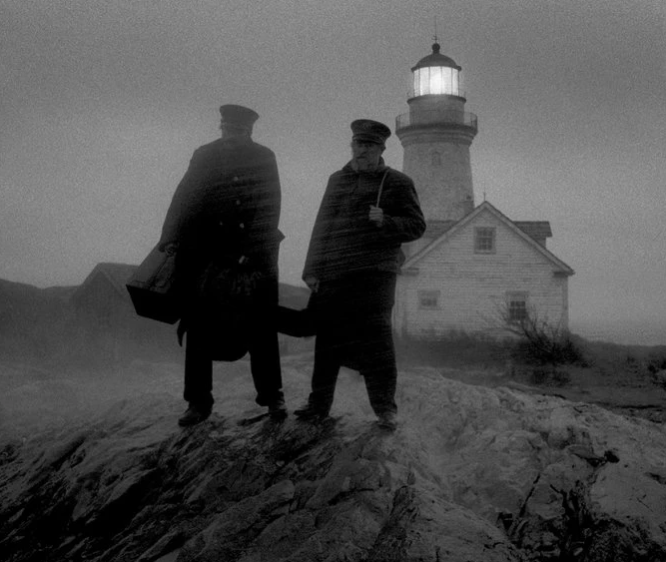A lighthouse is a structure meant to caution, to establish perimeters in limited visibility, to warn when navigating the partially unknown. The Lighthouse, the latest film by filmmaker Robert Eggers, is all of these things, and nothing short of one of the darkest films produced in the last decade, even despite a few laughs. Co-writing the screenplay with his brother, Eggers persists in forcing his audience to witness eerie moments of ambiguous resolution, as he had done in his previous work The Witch (2017). Yet, instead of focusing on the downfall of a Puritan family treading the wet pine and maple forests somewhere in central Massachusetts, The Lighthouse offers us the blustery Atlantic in the 1890s, scrimshaw fables, howling mermaids, and a galvanizing magic realism.

Filmed in black-and-white 35mm, The Lighthouse takes an island off the rocky coast of New England as its setting, emphasizing its obscurity and opacity. Thomas Wake, performed in inimitable beats by Willem Dafoe, is a marooned lighthouse “wickie” with a chiseled beard who employs Ephraim Winslow (Robert Pattinson) to maintain their living quarters. While Wake begins to heavily criticize Winslow’s lack of work ethic and questions why he left his post in eastern Canada, Winslow garners hints of Wake’s mysterious relation to the island’s lighthouse. Trust becomes as sensitive a topic as the ethereal light revolving about them, and we are cast without really knowing why into a maelstrom of drunken jubilation, fiery slander, menacing hallucinations, and measures of masculine intimacy of the most complicated kind (Dafoe and Pattinson slow-dancing to the flicker of a whale-oil lamp is sentimental but startling).
Eggers’ choice of character blocking and meticulously crafted mis-en-scène works to accentuate the heft of what it means to encounter, both for the characters and us. In an overwhelming exterior tracking shot that carries us all the way up the lighthouse from its base to the catwalk, we meet the structure’s girth and its imperfections in mortar, which only impresses upon its haunting aura. When Wake delivers a Father Mapple-esque damning of Winslow, candle-light shadow hollowing his eyes, we can almost feel the heat of his breath as spit is thrown in close-up. Then there are the antagonizing skirmishes between Winslow and a seagull, eventually culminating in a scene in which Winslow repeatedly strikes the bird over a rock well until nothing is left but bone and bloody feathers. No other film in recent memory has most celebrated the nuances of black-and-white cinematography as the The Lighthouse does here. The play with light and shadow pairs perfectly with the gritty saltiness of the film’s narrative occasion and decisively reiterates the importance of confronting diagetic illusion in cinema.
To describe The Lighthouse to anyone who hasn’t seen it is a difficult task. It is as if Fight Club meets Moby Dick, with characters rumbling through episodes of existential anguish and identity dissociation. Or it is an old New England maritime yarn clashing with the myth of Prometheus, the Titan son of an Oceanid punished for supplying fire and light to humans. It is something meets something, and therein lies the point. The Lighthouse venerates the aesthetics of the old (a nod to 1920s German expressionism) while respectfully usurping the hysterical immediacy of the new (tonal elements of Danish director Nicolas Winding Refn’s films are evoked). A brazen effort in contemporary filmmaking, it admonishes us, as a lighthouse should, to approach with all regard and apprehension.
